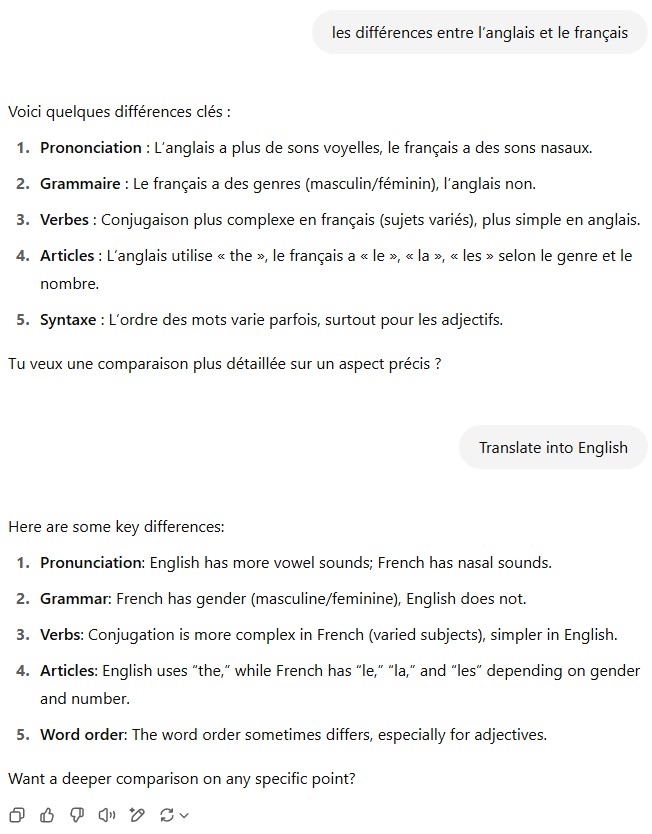Learn a Little Grammar
With this lesson, we're going to be familiarizing ourselves with basic English grammar. Remember—the purpose here is not to memorize everything. We're not learning these grammar rules, we're just creating empty folders in our brains, which will be filled with information as we immerse.
For example, when you have a basic idea of what an "adjective" is, you'll be able to automatically notice adjectives during immersion, and then develop a much stronger idea of how they work in English sentences. There is no need for hours of grammar exercises to learn all the tiny details of adjectives, you'll just develop a natural feel for them.
Grammar doesn't matter very much because it's like trying to learn to ride a bike by reading about it. It helps a bit, but really, you should just get on the bike and figure things out on your own. Grammar follows language, not the other way around. English was not created based on a list of grammar rules. Languages are living entities that are always changing, and grammar rules try to keep up and explain how the language works. So instead of spending months trying to understand those grammar rules with all of their exceptions and irregularities, you can use immersion to learn the grammar without much effort.
As we said before, you became fluent in your first language without studying any grammar. Do you need to study grammar at all? No, you don't. But I do believe a little grammar is helpful for getting started quickly.
Most people don't like grammar, so let's get through it as fast as possible. If you do like grammar (like me), that's cool, but you can study it during your free time; don't consider it to be "studying".
Ask AI for the Differences Between Your Language and English
The first task for building empty grammar folders in your filing cabinet is to quickly read about the differences between your native language and English. This should take 5 minutes maximum.
Use your preferred AI tool (I prefer ChatGPT). In your native language, ask the AI for "The differences between [your native language] and English."
I recommend using AI for this because you want a brief explanation, not a giant article. We're trying to move through this stuff quickly.
For example, if my native language was French, I'd type into ChatGPT, "les différences entre l’anglais et le français".
Here is the response in French and English. You don't need to translate your AI's response into English, I just translated this example so you can read it even if you don't know French.

This was a brief response from ChatGPT. I also used Google's Gemini AI, and its response was much longer and more detailed, but the information was basically the same.
Read the response from your AI. That's it! The first task has been completed. Some high-level empty grammar folders have been created for you.
Intro English Grammar Concepts
For the next task, I'm going to give some short definitions for various English grammar things.
As you're reading through this list, if there's something you don't understand, I'd recommend just moving on.
Don't do more research, don't study 100 different examples. It's okay. The empty folder will have already been created in your head. Immersion will help you understand later. A large part of learning a new language is being comfortable with not understanding everything. Over time, you'll figure it all out.
| Rule | Definition | Example |
|---|---|---|
| Word Order | English uses SVO or Subject-Verb-Object order for building sentences. | Mike (S) eats (V) an apple (O). |
| Articles | Small word before nouns (A, An, or The) which give extra information about which thing or things we're talking about. | The dog is cute. He's eating an apple. |
| Noun | A person, place, or thing. | Person: doctor, Jake; Place: hospital, Chicago; Thing: gloves, vaccine |
| Adjective | A word to describe a noun. | The tall doctor. The blue hospital. |
| Verb | An action word. | She drinks water. He likes dogs. |
| Adverb | A word to describe a verb. | She drinks water slowly. He really likes dogs. |
| Pronoun | A word that replaces a noun to avoid repetition. | He, His, They, Them, I, Mine, Yours |
| Preposition | A word that shows a time, place, or direction relationship between two things. | The book is on the table. He ran across the street. |
| Negation | To say something is not the case. Use "not", "no", or prefixes like "Un-" or "Dis-". | She is not happy. She is unhappy. |
Punctuation:
|
Name and Definition:
|
Example:
|
Dashes and semicolons aren't common, but I wanted to explain them a little because I use them in my own writing.
Conclusion
Alright! I think that's good enough for now. If you're brand new to English, you will have just created a bunch of empty grammar folders in your brain. If you've been learning English for a while, this stuff should have been a quick reminder.
Don't worry if you don't understand everything. It will all become clear with immersion.
In any case, we're ready to move on. Hopefully, that brief grammar intro wasn't too painful for you. It's worth it though; you're now in a really good position to start learning grammar naturally through immersion. You'll never have to study grammar again if you don't want to.
In the next lesson, we're going to be gathering some of the tools necessary for immersion and the English Tea Break method.